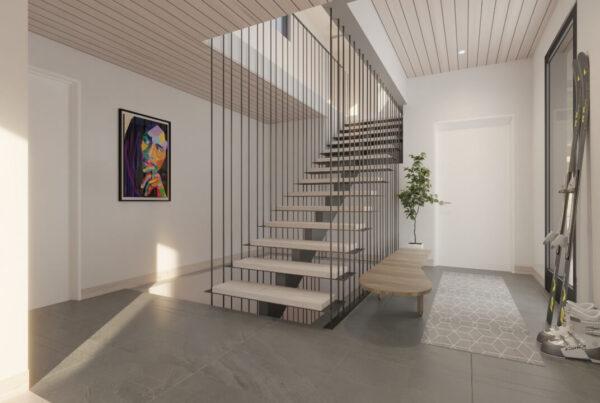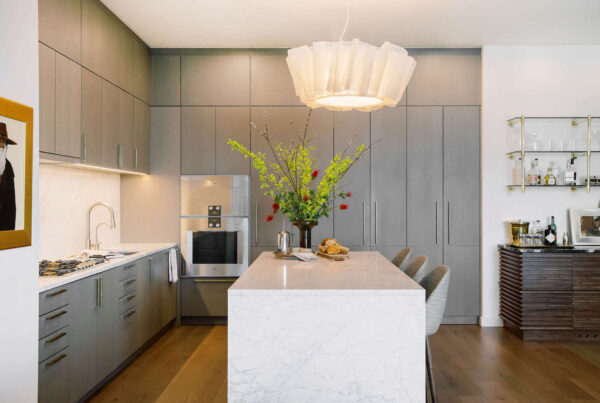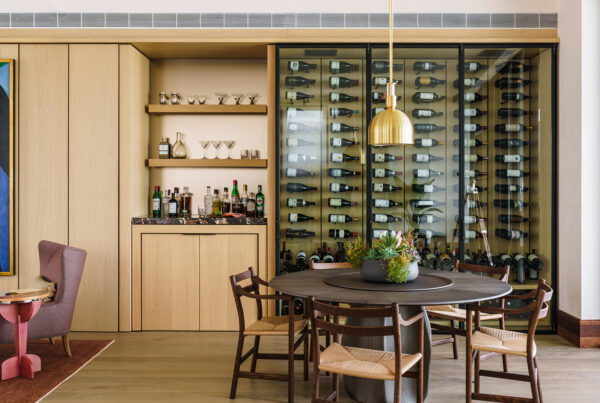Introduction
MDF panels have become increasingly popular in recent years as a building material for home construction and renovation projects. But what exactly are they and are they a good choice for your next project?
In this article, we will explore the pros and cons of using MDF in your home. We will look at what they are, health concerns, their sustainability and pricing. We’ll also provide some expert tips to help you make an informed decision about the best type of panel for your project.
MDF is a wood-based board made up of chips and fibers that are compressed and bonded together with resin under high temperature and pressure. It is often used for interior wall cladding, shelving or kitchen cabinets as it can be cut into almost any shape or size to fit your space. It also has a smooth surface which makes it easy to paint or varnish.
However, there are some potential drawbacks to using MDF in your home that you should consider before making a decision. Read on to find out more about the pros and cons so you can make an informed decision about whether MDF is right for you.
What Are MDF Panels?
MDF (Medium Density Fiberboard) is a type of board made up of wood fibers pressed together with adhesive. It’s a sturdy, affordable alternative to other types of wood products, such as plywood or particle board. Typically, MDF panels are used in building furniture and other products like cabinets and shelves.
Because the fibers are compressed together, MDF panels have very few visible grains or imperfections. It’s also quite strong and resistant to warping or cracking. Plus, it’s relatively light-weight compared to other types of wood material making it easier to work with.
MDF is also available in a variety of thicknesses and sizes, allowing you to pick the perfect size for your project or application. This makes it an ideal material for constructing furniture where uniformity is key. Speaking of uniformity, MDF panels can also be painted without having to sand down the surface beforehand – making it a great option for DIY projects!
Possible Health Risks Associated With MDF
It’s important to note that Medium Density Fiberboard (MDF) has come under fire recently for its potential to release formaldehyde, a toxic compound that can act as an irritant and allergen. The fact is, MDF is made with formaldehyde-based resin, meaning that it can emit small amounts of the chemical over time.
However, while formaldehyde emissions do occur, they are generally low in MDF since the resin used binds the fibers together without affecting air quality. In fact, the Composite Panel Association (CPA) states that particleboard and medium-density fiberboard panels manufactured today have extremely low levels of formaldehyde emission, so you needn’t be overly concerned about this issue.
It’s also worth noting that similar materials like plywood also contain formaldehyde in their adhesives and can emit formaldehyde over time. Therefore, if you’re worried about your health when considering MDF for an interior application, just make sure that wherever you’re buying it from is certified to meet regulatory requirements for formaldehyde emission levels set by either the CPA or CARB.
Air Quality and MDF: Is It Safe?
MDF is a composite material that is made from wood fibers and resin binders. It is incredibly durable and cost-effective, but there are risks to air quality when it is used in the home.
The use of MDF within an interior environment may introduce formaldehyde into the air space. Formaldehyde is classified as a carcinogen, meaning it can increase the risk of cancer. The amount of formaldehyde released from MDF depends on the age and condition of the product, but some experts warn that it could be up to ten times higher than acceptable limits when new. This risk can be reduced with proper ventilation or by treating MDF with a sealer or coat to reduce emissions.
MDF also gives off dust particles when cut, sanded or worked on in any way. Dust particles can aggravate respiratory conditions and allergies and should be avoided as much as possible. To reduce these effects, always wear safety goggles and a face mask when working with MDF, use a wet sanding technique when possible, and keep your workspace well-ventilated to avoid respiratory irritation.
The Sustainability of Using MDF
MDF, or medium-density fibreboard, is a man-made wood product made from wood fibers that are combined with resin or wax binders and then pressed together in panels. It is used for various purposes like furniture, cabinets, countertops, and more. One of the main reasons people choose MDF over other materials is because of its sustainability.
MDF helps to save trees due to its manufacturing process which makes use of recycled wood chips and sawdust – materials which would otherwise go unused. Another benefit is that it has a much lower carbon footprint than other materials, such as particleboard, which requires more energy to produce.
Additionally, MDF is also very durable and requires minimal maintenance. It won’t warp or break down over time like other types of wood materials, so it can last for decades without having to be replaced. Plus, it doesn’t require the use of harsh chemicals during production and can be easily cleaned with just soap and water.
For all these reasons, MDF can be an environmentally-friendly choice when you’re looking for sustainable materials for your home projects.
Pricing and Other Costs of Using MDF Panels
MDF is an economical choice for those looking to update their interior decor or home furnishings. Compared to other materials like solid wood, MDF is much less expensive – often costing as much as half the price of solid wood pieces. This makes it an attractive option for budget-minded consumers. Additionally, MDF panels require much less time and effort to install, which can further reduce the overall cost of installing them in your home.
However, MDF does have its drawbacks when it comes to cost. Due to the increased production that goes into producing MDF panels, they may become more expensive than other materials over time. As such, it is important to factor in additional costs upfront when considering using MDF for a project or piece of furniture – including the cost of painting or veneering it and any other special finishes needed for the project. Additionally, due to its lower weight there can be higher shipping costs for large amounts of MDF than with more traditional materials.
Alternatives to Using MDF
Using MDF in your home can provide you with a diverse range of benefits, from affordability to sustainability. But if it’s not the right fit for your project, there are several alternatives to using MDF – each with its own set of pros and cons.
Plywood
Plywood is a great alternative to MDF and is generally more durable. It is made up of many thin layers of wood veneer glued together under high pressure, resulting in a strong and flexible material. However, this material can be more expensive than MDF due to the complexity of the manufacturing process.
Particleboard
Particleboard is another alternative to MDF that is often made from recycled wood particles bound together with lignin-based glue or resin. It usually costs less than MDF but is not as sturdy or resistant to moisture and humidity.
Hardboard
Hardboard is produced by compressing wood fibers into thin sheets that are hard but brittle. Unlike other wood paneling materials, it does not have grain or texture, making it poor at absorbing paint or stain. It does have a few advantages over other materials though: it’s lightweight, easy to install and very affordable.
Conclusion
In conclusion, MDF can be a great choice for many home applications. It is cost-effective, widely available and can take the look of almost any other material due to its ability to be painted, stained, and machined. With proper finishes, the health risks associated with MDF can be greatly reduced. Though it is not a renewable material, MDF is recyclable and biodegradable, making it a more sustainable choice than some other construction materials, and it is often used in furniture and cabinets that are designed to last for years, reducing the environmental footprint of the products.
Sources:
[1] https://www.zadinteriors.com/blog/plywood-vs-particle-board-vs-mdf-pros-cons-differences/ [2] https://www.paradeofhomes.org/blog/mdf-solid-wood-furniture-advantages-disadvantages/ [3] https://www.addicted2decorating.com/mdf-vs-plywood-differences-pros-and-cons-and-when-to-use-what.html [4] https://www.angi.com/articles/what-is-mdf.htm [5] https://sisupainting.com/pros-cons-medium-density-fiberboard-mdf/




